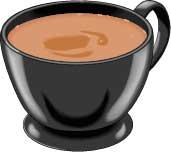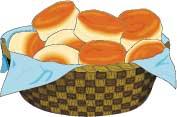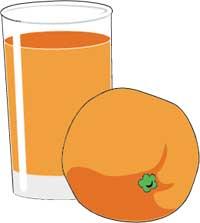Breakfast cereals Breakfast cereals
The origin of these products is due to a prestigious American physician, John Harvey Kellogg. Apparently, it belonged to the seventh-day Adventist church and, in the belief that it was essential to care for food to promote health, breakfast cereals are an invention that sought the traditional English breakfast, fried eggs and ham, a substitute. For this reason, the brand Kellogs is considered the first producer of breakfast cereals, although fortunately there are currently numerous brand names.
In a suitable breakfast, cereals are essential, although not every day, to take them occasionally in adults and for the day to day in childhood and adolescence.

These products have two main advantages: on the one hand, they have a wide variety of ingredients to meet the energy and nourishing needs of the body and, on the other, they are prepared to eat without cooking. In addition, in the first part of the day the body does not need much fat or protein, and carbohydrates are much more useful because they are a fast, clean and sustainable energy source, and cereals perfectly meet this principle.
If we analyze the composition of breakfast cereals we will observe that, although the majority component are cereals, they are usually sold with a large number of products: plums, nuts, hazelnuts, coconut, banana, apple, etc. They are usually dehydrated. As for cereals, the most commonly used are wheat, rice, corn and oats.
The most common breakfast cereals usually include a type of cereal and some condiment: sugar, honey, cocoa, etc. Thanks to them, in addition to being sweeter, cereals last longer. The most elaborate breakfast cereals are a mixture of various types of cereals, to which are added some nuts (plums, nuts and hazelnuts) or dehydrated fruit (apple, coconut and banana). A known example is the muesli of Swiss origin.
The main component of cereals is starch. This starch suffers a division so it can be consumed as such. The cereals that are marketed usually lose certain vitamins through the process suffered, so they are added vitamins and mineral salts.
Moreover, the vitamins that we usually introduce with breakfast cereals are those of groups B, D and E, while mineral salts are calcium, phosphorus, iron, magnesium, potassium and sodium. Another important component that we include with breakfast cereals is fiber: those made with refined cereals usually contain little amount of fiber, while the whole grain compounds are much more (in some cases they have 37 g of fiber of 100 g). The latter, besides being whole grains, contain an added boot.
So you already know: adults preferably consume cereals with a lot of fiber and little sugar. For children, all are appropriate, but it is convenient to rotate them.
Breakfast suitable for breakfast

In the Spanish state, a few years ago, a study of the customs of children and young people for breakfast was conducted. The study began on 1 May 1998 and ended on 30 April 2000. 3,534 children and young people formed a sample between two and twenty-four years. The main conclusions were that 8% of children and young people come without breakfast to school or work and 4% do not eat anything throughout the morning. On the other hand, among those who have breakfast, only 5% of those surveyed make an adequate breakfast. Therefore, it is clear that we have to explain the composition of a suitable breakfast.
Taking care of children's and youth breakfast is especially important for:
- At that age, eating habits are fixed. An adult with good breakfast is the one who has learned to have breakfast in childhood.
- Nutritional needs are high due to the growth process and the risk of occurrence of associated problems is higher at this age.
- It is, above all, about the food that has changed most in countries with a Mediterranean diet, since the food industry has tried to introduce pastry products that can be consumed quickly.

With the right breakfast we can cover the nutritional needs of the day and make a better distribution of food. Breakfast should provide 25% of the energy we need throughout the day. For example, if a 12-year-old needs 2,200 kcal a day, breakfast should supply 550 kcal.
Therefore, it is clear that we have to make a good breakfast in childhood and adolescence, but let's specify what is the right breakfast. Three essential elements for a healthy breakfast:
- Milk or dairy products: milk, yogurt, fresh cheese… There is the possibility to alternate according to tastes. If we drink milk we can use products composed of cocoa or malted cereals, but coffee is not convenient. Those who cannot drink milk can take calcium-enriched soy milk.
- Cereals: breakfast cereals, biscuits, toast or cakes and homemade muffins. Combining different products, we will convert breakfast into a breath and attractive.
- Fruit: in juice or whole. The juice has an advantage for those who get up with little hunger: it helps to make hunger.

But it is essential that we take enough time to consume these foods, since when we are in a hurry it is impossible to make a good breakfast. Therefore, to put into practice all this knowledge, it is not enough to have good intentions: we have to lie before night and rise before morning to start the day.





